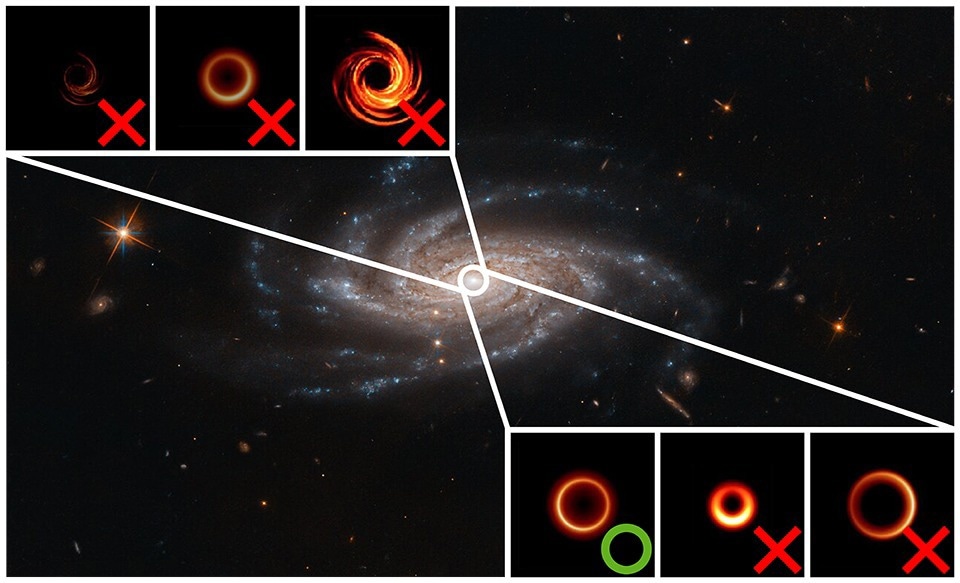Machine learning has inferred the rules controlling the link between a galaxy’s growth and the growth of the supermassive black hole present at its center. The close correlation present between the two growth rates discovered in this study verifies a decades-old theory.

Conceptual illustration of this research. Machine learning tries many different pairings of galaxy and black hole models, and then chooses the pairing that best matches actual observations. Image Credit: H. Zhang; M. Wielgus et al.; ESA/Hubble & NASA; A. Bellini
The majority, if not all, of galaxies, are considered to harbor a supermassive black hole at their center. Such black holes have masses exceeding 100,000 times that of the Sun, up to even millions or billions of times more massive. Astronomers have questioned how such behemoths grow so rapidly, and how they develop in the first place.
Haowen Zhang (University of Arizona) and Dr. Peter Behroozi (NAOJ and the University of Arizona), the lead authors of a new study, constructed a machine-learning framework in which computers would suggest new rules for how supermassive black holes grew with respect to time.
They made use of those rules to imitate the development of billions of black holes in a virtual universe and eventually “observed” the virtual universe to test if it agreed with observations of black holes present in the real Universe. After trying millions of rulesets, the computers selected the rules that best explain present observations.
The outcomes display that supermassive black holes grow least calmly in the first few billion years of the Universe, and then grow much more gradually after this.
We’ve known for a while that galaxies have this strange behavior, where they reach a peak in their rate of forming new stars, then it dwindles over time, and then, later on, they stop forming stars altogether.
Dr Peter Behroozi, Study Lead Author, National Astronomical Observatory of Japan
Behroozi added, “Now, we’ve been able to show that black holes do the same: growing and shutting off at the same times as their host galaxies. This confirms a decades-old hypothesis about black hole growth in galaxies.”
But the outcomes pose further questions. Black holes are known to be much smaller compared to the galaxies in which they survive. If the Milky Way were scaled down to the Earth’s size, its supermassive black hole would equal the size of the period at the end of this sentence.
For the black hole to develop at a similar rate as the bigger galaxy, it would need synchronization between gas flows at immensely various scales. How black holes plot with galaxies to obtain this balance is yet to be realized.
Journal Reference
Zhang, H., et al. (2022) TRINITY I: self-consistently modelling the dark matter halo–galaxy–supermassive black hole connection from z = 0–10. Monthly Notices of the Royal Astronomical Society. doi.org/10.1093/mnras/stac2633.